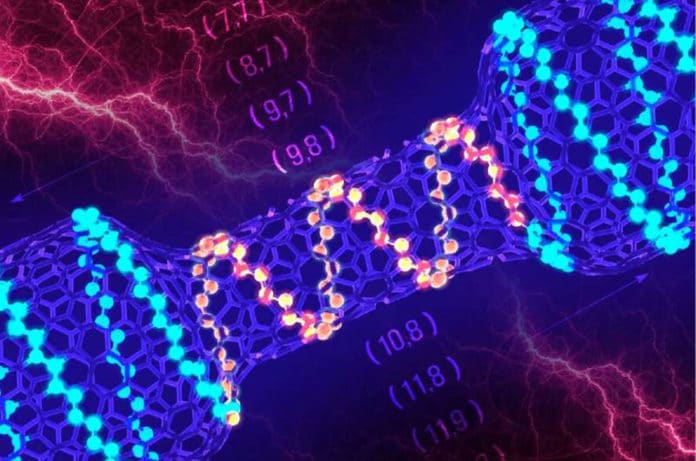Scientists have created a tiny transistor using a unique tool inserted into an electron microscope. The transistor is 25,000 times smaller than the width of human hair.
QUT Center for Materials Science co-director Professor Dmitri Golberg, who led the research project, said, “The result was a “very interesting fundamental discovery” which could lead the way for the future development of tiny transistors for future generations of advanced computing devices.”
“In this work, we have shown it is possible to control the electronic properties of an individual carbon nanotube.”
Scientists created the transistor by applying a low voltage force to heat the carbon nanotube. The nanotube comprises a few layers until outer tube shells separate, leaving just a single-layer nanotube.
Applying heat and strain changed the chilarity of the nanotube. It means the pattern in which the carbon atoms joined together to form the single-atomic layer of the nanotube wall was rearranged.
The new structure connecting the carbon atoms was that the nanotube was transformed into a transistor.
Professor Golberg’s team members from the National University of Science and Technology in Moscow created a theory explaining the changes in the atomic structure and properties observed in the transistor.
Lead author Dr. Dai-Ming Tang, from the International Center for Materials Nanoarchitectonics in Japan, said, “the research had demonstrated the ability to manipulate the molecular properties of the nanotube to fabricated nanoscale electrical device.”
“Semiconducting carbon nanotubes are promising for fabricating energy-efficient nano transistors to build beyond-silicon microprocessors. However, it remains a great challenge to control the chirality of individual carbon nanotubes, which uniquely determines the atomic geometry and electronic structure.”
“In this work, we designed and fabricated carbon nanotube intramolecular transistors by altering the local chirality of a metallic nanotube segment by heating and mechanical strain.”
Professor Golberg said, “the research is demonstrating the fundamental science in creating the tiny transistor was a promising step towards building beyond-silicon microprocessors.”
“Miniaturization of transistors down to nanometer scale is a great challenge of the modern semiconducting industry and nanotechnology.”
“The present discovery, although not practical for a mass-production of tiny transistors, shows a novel fabrication principle and opens up a new horizon of using thermomechanical treatments of nanotubes for obtaining the smallest transistors with desired characteristics.”
Journal Reference:
- Dai-Ming Tang et al., Semiconductor nanochannels in metallic carbon nanotubes by thermomechanical chirality alteration, Science (2021). DOI: 10.1126/science.abi8884
